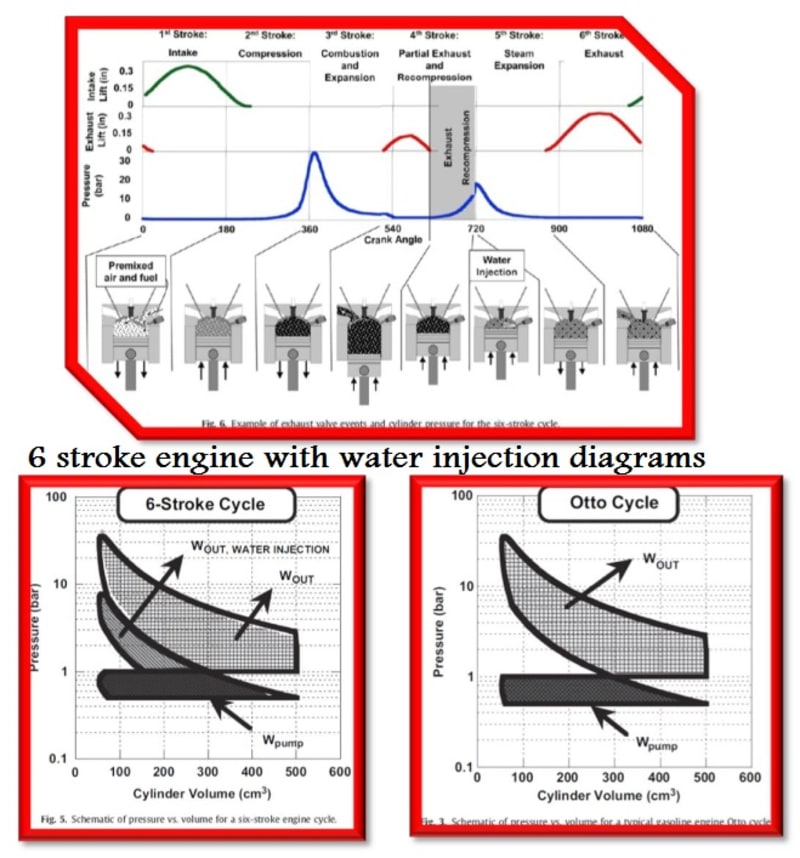Synopsis:
Only about 30% of the fuel energy changes to useful work in Internal Combustion Engines (ICE`s). The exhaust exergy of the engine has approximately the same amount as the output work. So the exhaust flow shows great potential of useful work in which could be achieved by improving efficiency and applying new cycles to the engine. Turbo charger is of some mechanisms using the kinematic energy of the exhaust flow.
Using water in ICE`s is one of the most favorable concept to be worked on. Injecting water in the intake manifold, injecting water to the compressed exhaust products as a 6 stroke engine, etc. are of some to be named. But their biggest problems are low durability, high manufacturing cost due to camshaft changes, etc.
The previous 6 stroke with water injection mechanism: (Fig.1)
1- The common strokes of intake, compression and ignition (Strokes 1-2-3).
2- Half of the exhaust is trapped and compressed to 15 bar while T=900 k (Stroke 4).
3- Water injection at high pressure at TDC and vapor expansion work (imep=3 bar) (Stroke 5).
4- Exhaust of the vapor-combustion product mixture (Stroke 6).
Background:
In spark ignition engine we have these conditions:
1- 95% of the fuel-air mixture is burnt within the 30 degree after top dead center (aTDC).
2- 55-60% of the output power is achieved within the 35-40 degree aTDC.(P_V diagram).
3- The thermodynamic condition at this state: P=30 bar, T=2000 k.
Our invention: (Fig.2,3)
In our invention the best time of the water injection would have all of the above mentioned conditions so greater amount of the vapor expansion work would be acceptable (according to the thermodynamic condition) without adding any extra strokes to the engine(no friction is added). The greater amount of imep would be achieved.
Results:
1- Increasing the engine efficiency by at least 30%.
2- Reducing heat losses by absorbing heat with the vapor and producing work in the combustion chamber.
3- Longer components working life due to the lower thermal stresses.
4- No great additional systems are needed.
5- Could be applied to all of the spark ignition engines.
6- Using the vapor cycle as bottom close-cycle to refilling the water tank at every maintenance period.
7- Easy control over the injection timing.
8- Easy vapor cycle separation at especial conditions without any effect on the Otto cycle.
All the above mentioned information are adapted from different references. Please do not hesitate for further information.
Like this entry?
-
About the Entrant
- Name:Farzad Khoshabadi
- Type of entry:teamTeam members:Farhad Khoshabadi
- Software used for this entry:Fortran 90
- Patent status:pending








